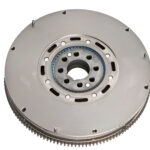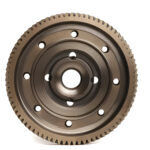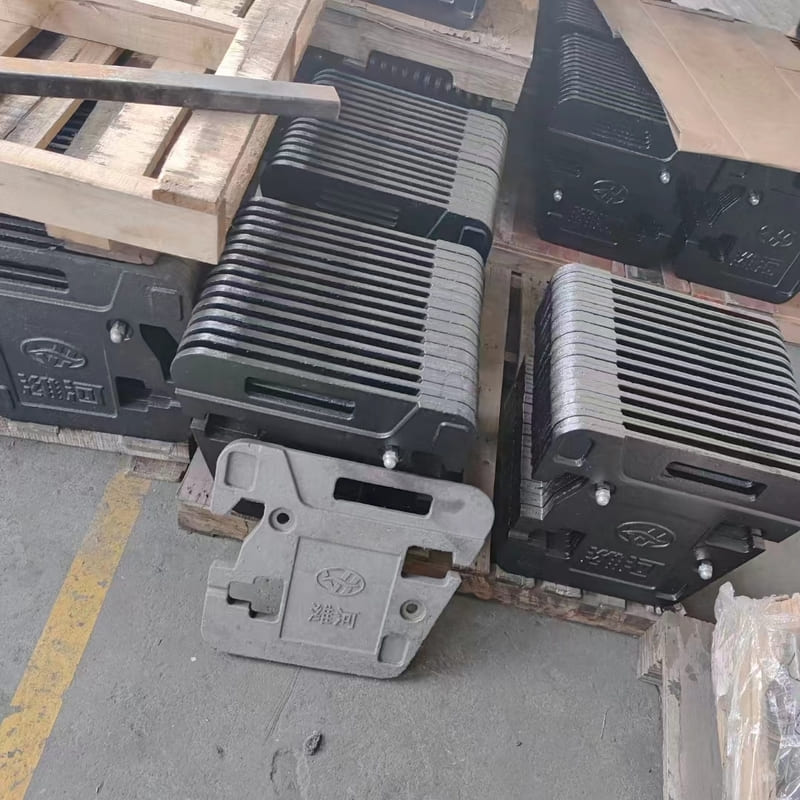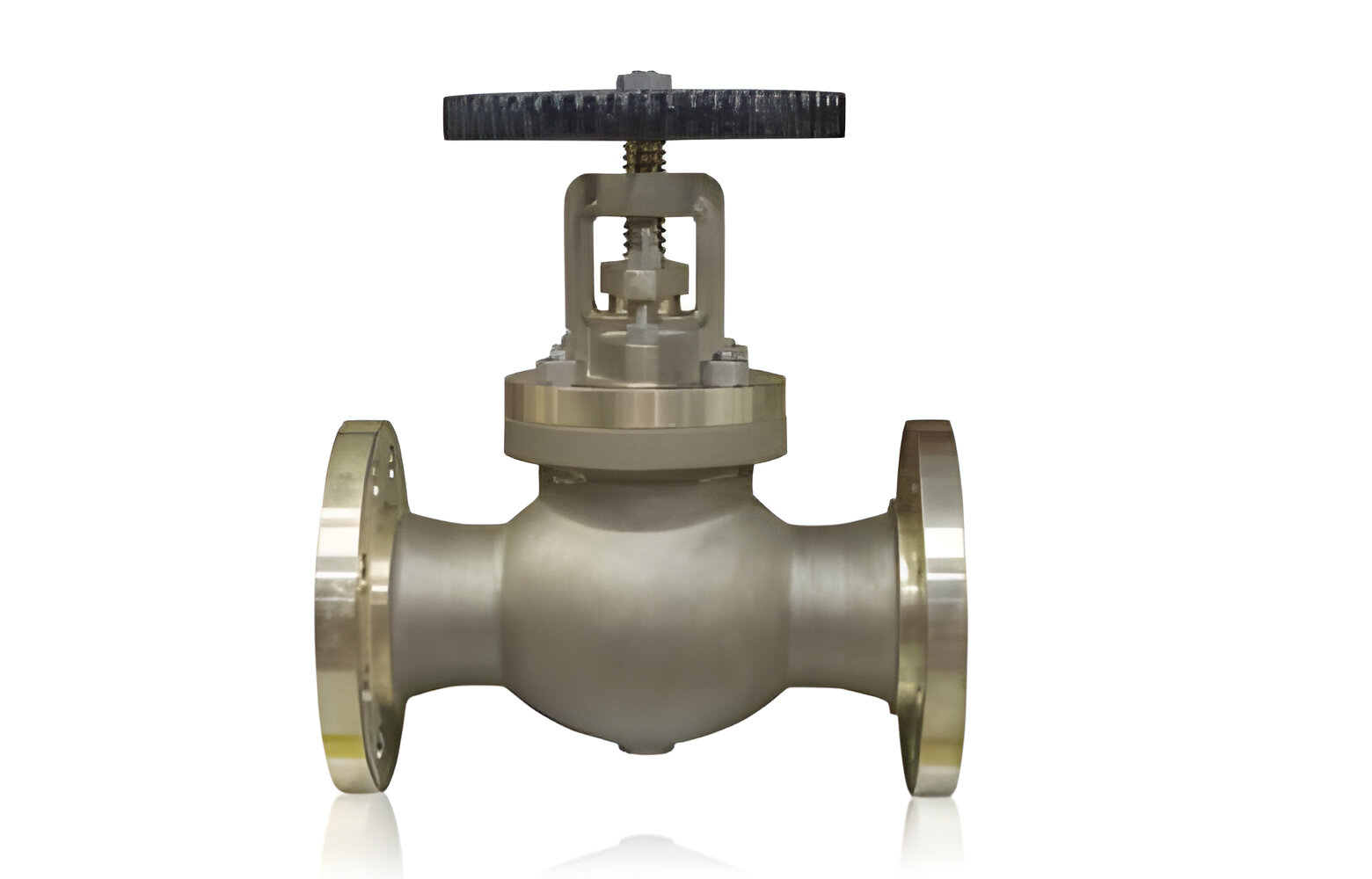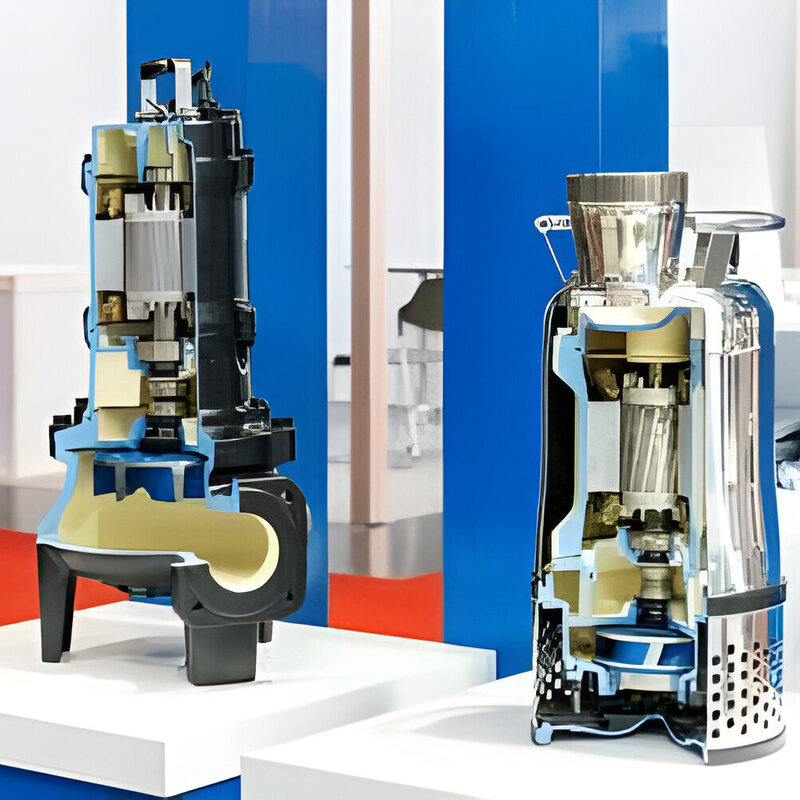Cast iron flywheels have been key in industrial machinery for centuries. They are affordable and last long, making them great for storing energy. These parts have improved with new materials and tech, becoming popular for many uses.
Today, flywheel systems can hold up to 700 kWh per rotor and give up to 500 MW of power. They are efficient, last a long time, and respond quickly. This makes them perfect for uninterruptible power supplies, keeping the power steady, and improving power quality. Beacon Power has used 20 MW flywheel plants to help control grid frequency, showing their effectiveness.
Cast iron flywheels are loved for their strength, ability to reduce vibrations, and low cost. As we look into new energy sources and ways to generate power, these parts will be vital. They will help shape the future of storing and managing energy.
Understanding Cast Iron Flywheels: History and Fundamentals
Flywheels have a long history, starting with simple stone disks. These early tools helped store and control energy. Today, cast iron flywheels are still popular because of their special properties and flexibility.
Evolution of Flywheel Technology
Flywheels have changed a lot over time. Early ones could only spin a few thousand times per minute. But now, thanks to new materials, they can spin up to 60,000 RPM. This makes them much better at storing energy.
Basic Principles and Design Features
A flywheel stores energy by spinning a heavy mass. The shape, strength, and how it's held together are key. Cast iron is often used because it's strong, durable, and helps smooth out vibrations.
Manufacturing Process and Material Properties
Cast iron flywheels are made using sand casting. This method lets them be shaped precisely. Their high density and strength make them great for storing energy. Modern flywheels also work better because they're in vacuum environments, which reduces air resistance.
| Flywheel Material | Tensile Strength (MPa) | Density (g/cm³) | Maximum Speed (m/s) |
|---|---|---|---|
| Cast Iron | 200-600 | 7.2-7.5 | 600 |
| Steel | 400-1000 | 7.8-8.1 | 500 |
| Carbon Fiber Composite | 1000-2000 | 1.5-1.8 | 1000 |
The development of flywheels has focused on storing more energy and working better. Cast iron flywheels have been key in this progress. They help in many areas, like in modern machines and power systems.

Cast Iron Flywheels: Advantages and Technical Specifications
Cast iron flywheels are known for their durability and ability to dampen vibrations. They are also cost-effective to make. These qualities make them a top choice for many machines and uses.
Cast iron flywheels have high power density. They can hold a lot of energy in a small space. This makes them great for quick starts or stops. They also last a long time, often over 1 million cycles, if well cared for.
Though they might not store as much energy as some other options, cast iron flywheels are very efficient. They can respond quickly, making them reliable for managing power.
| Flywheel Material | Average Weight (lbs) | Recommended Applications |
|---|---|---|
| Cast Iron | 25-40 | Stock or OE Replacement, Towing or Off-Road |
| Billet Steel | 25-40 | High-Performance Street, Towing or Off-Road, Drag Racing |
| Chromoly | 14-21 | Road Racing, Circle Track, Drifting |
| Billet Aluminum | 10-18 | Road Racing, Circle Track, Drag Cars, Certain Street Cars |
The specs of cast iron flywheels vary a lot. They can weigh from a few pounds to tons. They can store from kilowatt-hours to megawatt-hours of energy. Using cast iron can improve pump performance and lower maintenance costs.
If you want to boost pump performance, check out KT Foundry. They offer custom solutions and advice.
Applications and Performance in Modern Machinery
Cast iron flywheels are used in many industries. They are reliable and versatile. These parts help engines run smoothly and work more efficiently.
Automotive and Industrial Uses
In cars, cast iron flywheels are key to engine performance. They keep the power steady, making engines easier to start. They also help industrial machines like stamping presses run smoothly.
Energy Storage Applications
Modern flywheels are made for storing energy. They last longer than other storage solutions. Used in power plants, they help keep the grid stable, offering up to 20 MW of power.
Power Management Systems
Flywheels are vital in managing power. They ensure power is delivered consistently. They are used in many areas, from power grids to spacecraft.
Cast iron flywheels are crucial in many fields. They help engines run smoothly and store energy. Their role in modern technology is vital.
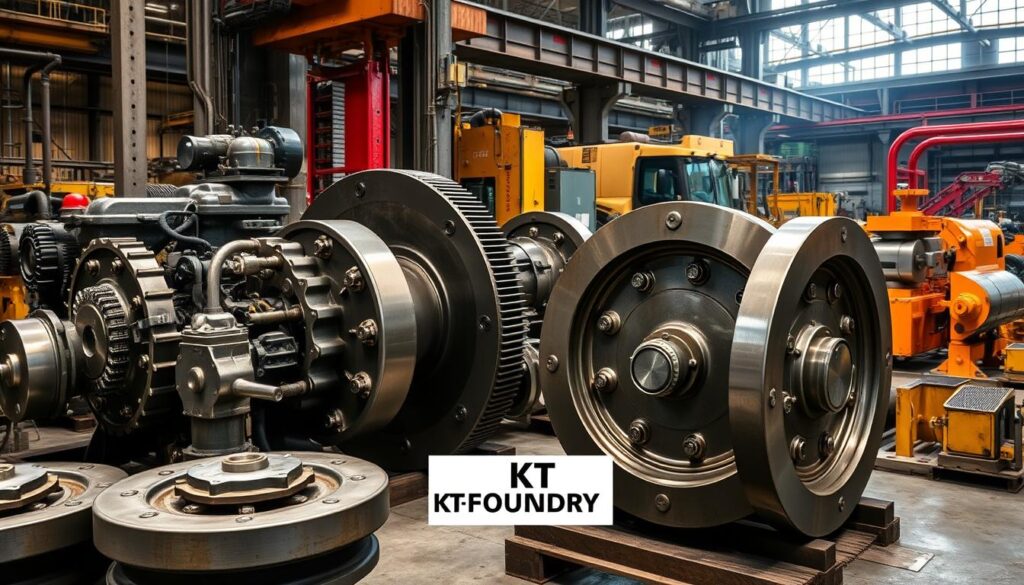
| Application | Flywheel Performance Impact |
|---|---|
| Automotive Engines | Smooths power delivery, aids in starting |
| Industrial Machinery | Regulates speed in equipment like stamping presses |
| Energy Storage | Provides frequency regulation services to power grids, up to 20 MW capacity |
| Power Management | Improves power quality by mitigating short-term disturbances, used in UPS and transportation systems |
"Flywheels are built in various rotor configurations, such as disks, solid cylinders, and thick-walled cylinders made from carbon and glass composites or high-strength steel."
Conclusion
Cast iron flywheels are crucial in storing energy and managing power across many industries. They are durable, perform well, and are cost-effective. This makes them a strong competitor to other storage technologies, especially for high-power needs.
The global cast iron flywheel market is worth $264M each year and is growing. This shows a bright future for this technology.
Looking to the future, we see many exciting changes in flywheels. They will likely work better with renewable energy, be made of lighter and stronger materials, and be used more in electric cars. As we need better ways to store energy, cast iron flywheels will keep being a key player.
Cast iron flywheels are versatile, perform well, and are affordable. They are essential in the shift to sustainable energy. We're looking forward to seeing more progress and use of this technology in the future.


